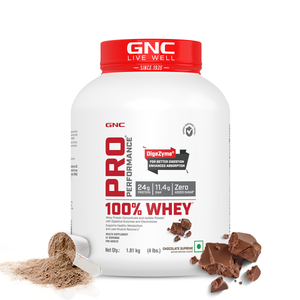Strength training exercises can improve heart health, boost metabolism, strengthen bones and muscles, and help weight loss and management? Strength training is also called weight or resistance training and holds importance in shaping your fitness. Everyday strength training is good for people of all ages.
And the best part is that you can easily do strength training exercises without equipment at home. However, you need to understand what strength training is and how it will benefit you.
What is Strength Training?
Strength training is a kind of exercise that focuses on building and increasing the strength of muscles. The primary goal is to improve the ability of muscles to generate force against resistance.
This form of training typically involves using weights, resistance bands, or body weight to create resistance for the muscles to work against. Some key features of strength training exercises include the following:
Resistance
Strength training exercises involve working against resistance. This resistance can come from different sources, such as free weights (dumbbells, barbells), weight machines, resistance bands, or even the body's weight
Intensity
The adaptability of strength training is one of its key features. The intensity of your workouts can be altered to your fitness level, whether at home or in the gym. This means you can control the pace of your strength gains, making your fitness journey your own.
Repetitions and Sets
Strength training exercises are typically organized into sets (a group of repetitions) and repetitions (the number of times an exercise is performed in a set). The specific combination of sets and repetitions depends on the individual's goals and the program they follow.
Progressive Overload
This form involves gradually increasing the resistance or the difficulty of exercises over time. By continually challenging the muscles, the body adapts by getting stronger.
Rest and Recovery
Sufficient rest and recovery are crucial for your muscle growth and overall strength improvement. Your muscles require time to repair and grow stronger after being subjected to the strain or stress of strength training.
Compound and Isolation Exercises
Strength training can involve compound exercises targeting multiple muscle groups simultaneously (e.g., squats, deadlifts) and isolation exercises focusing on certain muscles (e.g., bicep curls, leg extensions).
It is best to ask your doctor which kind of strength training exercises you can do, especially if you have specific health or fitness concerns.
Benefits of Strength Training Exercises
You must have got an answer to what is strength training upto now. Strength training is a fantastic workout. Some of the primary benefits of strength training exercises are:
Increased Muscle Strength and Endurance
Strength training exercises are designed to enhance the ability of muscles to generate force. This leads to increased strength and improved endurance over time.
Improved Body Composition
Strength training helps you build lean muscles while reducing body fat. This can contribute to a more favorable body composition.
Boosts Metabolism
Building and maintaining muscle mass can increase resting metabolic rate, which helps in weight management and fat loss. Do strength training exercises at home regularly combined with clean eating, and you’ll see great results.
Supports Bone Health
Weight-bearing strength training exercises stimulate the bones, increasing the density of bones and reducing the occurrence of osteoporosis.
Supports Joint Health and Flexibility
Strengthening the muscles around joints can enhance joint stability and function. Additionally, strength training can improve flexibility when combined with proper stretching.
Enhanced Physical Performance
Increased muscle strength and power improve performance in daily activities, sports, and other physical pursuits.
Improved Posture
Strength training exercises target core muscles and the muscles responsible for posture, which help improve overall body alignment and minimize musculoskeletal issues.
Injury Prevention
Strengthening muscles and improving joint stability can reduce the risk of injuries, especially in activities that involve repetitive motions or impact.
Mental Health Benefits
Regular strength training has been linked with improved mood, reduced signs of depression and anxiety, and enhanced cognitive function.
Better Insulin Sensitivity
This training can also help improve insulin sensitivity, which is beneficial for blood glucose control and may minimize the risk of type 2 diabetes.
Enhanced Cardiovascular Health
While not a substitute for cardiovascular exercise, certain forms of strength training, especially those with higher intensity, can contribute to cardiovascular health by improving heart function and circulation.
Strength Training Exercises at Home
Don't limit your strength training to the gym. Discover the convenience and control of home workouts with minimal equipment. Elevate your fitness journey with these 10 strength training exercises that can be easily done at home, delivering visible results.
1. Bodyweight Squats
- Stand with feet shoulder-width apart.
- Lower your body by bending your knees and hips as if sitting back in a chair.
- Keep your back straight and lower until your thighs parallel the ground.
- Push through your heels to return to the starting position.
2. Push-Ups
- Start in a plank position with hands slightly wider than shoulder-width apart.
- Lower your body towards the ground by bending your elbows.
- Keep your body in a straight line.
- Push back up to the starting position.
3. Lunges
- Stand with your feet together.
- Step forward with one foot and lower your body until both knees are bent at a 90-degree angle.
- Push off the front foot and return to the starting position.
- Repeat on the other leg.
4. Plank
- Start in a forearm plank position with elbows directly beneath your shoulders.
- Keep your body in a straight line from head to heels.
- Hold the position for as long as possible, engaging your core muscles.
5. Glute Bridge
- Lie on your back with your knees bent and feet flat on the ground.
- Lift your hips towards the ceiling, squeezing your glutes at the top.
- Lower your hips back down without touching the ground.
6. Tricep Dips
- Sit on a sturdy chair or bench with hands gripping the edge.
- Slide your hips off the edge and lower your body by bending your elbows.
- Push back up to the starting position.
7. Single-Leg Calf Raises
- Stand on one leg with the other leg lifted slightly.
- Rise onto the ball of your foot, lifting your heel as high as possible.
- Lower the heel back down without touching the ground.
8. Plank with Shoulder Taps
- Start in a plank position.
- Lift one hand off the ground and tap the opposite shoulder.
- Return the hand to the ground and repeat on the other side.
9. Wall Sit
- Stand with your back against a wall.
- Lower your body into a seated position, with thighs parallel to the ground.
- Hold the position for as long as possible.
10. Bicep Curls with Household Items
- Hold a household item with some weight (e.g., water bottles, bags of rice) in each hand.
- Stand with feet shoulder-width apart.
- Bend your elbows, bringing the weights towards your shoulders, then lower them back down.
If you are a beginner and want to start your strength training journey, you should consult a professional trainer. They can guide you about the right kind of exercises and correct posture to avoid the risk of injury.
Remember, the key to success is consistency and patience. So, start your strength training journey today and watch your fitness level soar!
Strength Training Exercises for Weight Loss
If you are on a weight loss journey, including strength training exercises for weight loss at home. You can combine it with a healthy diet plan customized per your requirements to see visible results. Here are some ways in which strength training helps with weight loss.
-
Increased Metabolism
Maintaining lean muscles through strength training can boost your metabolism. Muscle tissue needs more energy (calories) to maintain than fat tissue, so having more muscle means you burn more calories even when at rest. -
Calorie Burning During Exercise
While not as calorie-intensive as some cardiovascular activities, strength training still burns calories during the workout. The more intense the workout, the more calories you'll burn. -
Afterburn Effect (Excess Post-Exercise Oxygen Consumption - EPOC)
Intense strength training sessions can create an afterburn effect, where your body burns calories post-exercise as it works to repair muscle tissue and restore energy levels. -
Body Composition Changes
Strength training helps reshape your body by increasing muscle mass and reducing fat. While the scale may not change dramatically, your body composition can improve, leading to a healthier and leaner appearance. -
Increased Fat Oxidation
Regular strength training has been associated with increased fat oxidation, making your body more efficient at using fat for energy. -
Appetite Regulation
Strength training exercises help regulate appetite hormones, potentially reducing overall calorie intake.
Tips and Precautions While Doing Strength Training Exercises
Now that you know what strength training is and its benefits, we would like to study it at home. But here are some tips to follow:
- Stay hydrated and drink water before, during, and after your strength training exercises.
- Never skip the warm-up. Cold muscles are more likely to get injured, so take the time to prepare your body for the workout.
- Maintain proper form during each strength training exercise to prevent injuries and ensure the targeted muscles are engaged.
- Listen to your body, and don't overexert yourself. If you experience pain (not to be confused with the usual discomfort of challenging exercise), stop and assess.
- Always rest between sets to allow your muscles proper recovery.
- Perform exercises through their full range of movement to maximize muscle engagement and flexibility. Avoid using weighty weights that compromise your range of motion.
- Start with light weights and increase gradually the intensity to avoid overtraining and minimize the risk of injury.
- If you have existing health conditions or injuries, modify exercises as needed or choose alternative exercises that don't aggravate your condition.
Conclusion
Most people skip weight training in order to perform cardio, mainly women, some of them get worried regarding building muscles. But that's a worry you can set aside. Many females don't produce the amount of strength hormone testosterone required to build big muscles. The tremendous benefits of strength training are clear. And regardless of size, muscular bodies are strong—and that's wonderful.
Frequently Asked Questions (FAQs)
1. Can I Perform Strength Training at Home?
The answer is surprisingly yes! Add strength training to your daily routine as research shows that the combo of strength training and cardio works very well for weight loss.
2. How Can I Enhance My Strength at Home?
You can enhance or improve your strength at home by performing push-ups, burpees, tricep dips, step-ups, squats, lunges, and burpees.
3. How Can You Strength Train Without a Gym?
You can consider doing bodyweight exercises and there is no requirement of any gym equipment to perform these exercises such as jumping jacks, planks, push-ups, lunges, etc.
4. What Kind of foods strengthen muscles?
To strengthen your muscles, you can include foods like chicken, brown rice, fruits, sweet potatoes, quinoa, salmon, eggs, etc.
Popular Search Terms
Pawan Hi-Flyer Sehrawat - The Present and Future of India's Kabaddi | Everything You Wanted to Know About Biki Singh | All You Wanted to Know About Narender Yadav | Deepak ‘The Indian Rock’ Nanda | Mass Gainer vs Whey Protein | Top 10 Vitamin D Foods | Diet Plan for Fat Loss | Best GNC Supplements for Beginners | Types of Supplements to Gain Weight | Diet Chart for Diabetic Patient, Diabetes diet chart plan | What Is Whey Protein and How Does It Work | Sukh ‘The King of Punjab's Johal: His Journey to Fame | Pawan Gupta: The Indian Air Force Serviceman and the Sanda Fighter




















